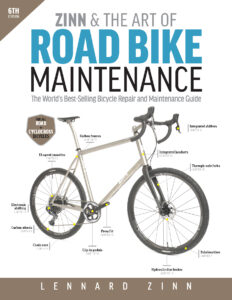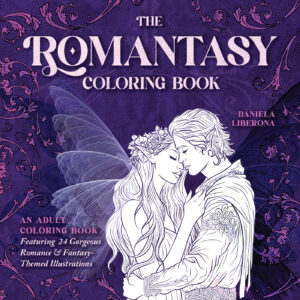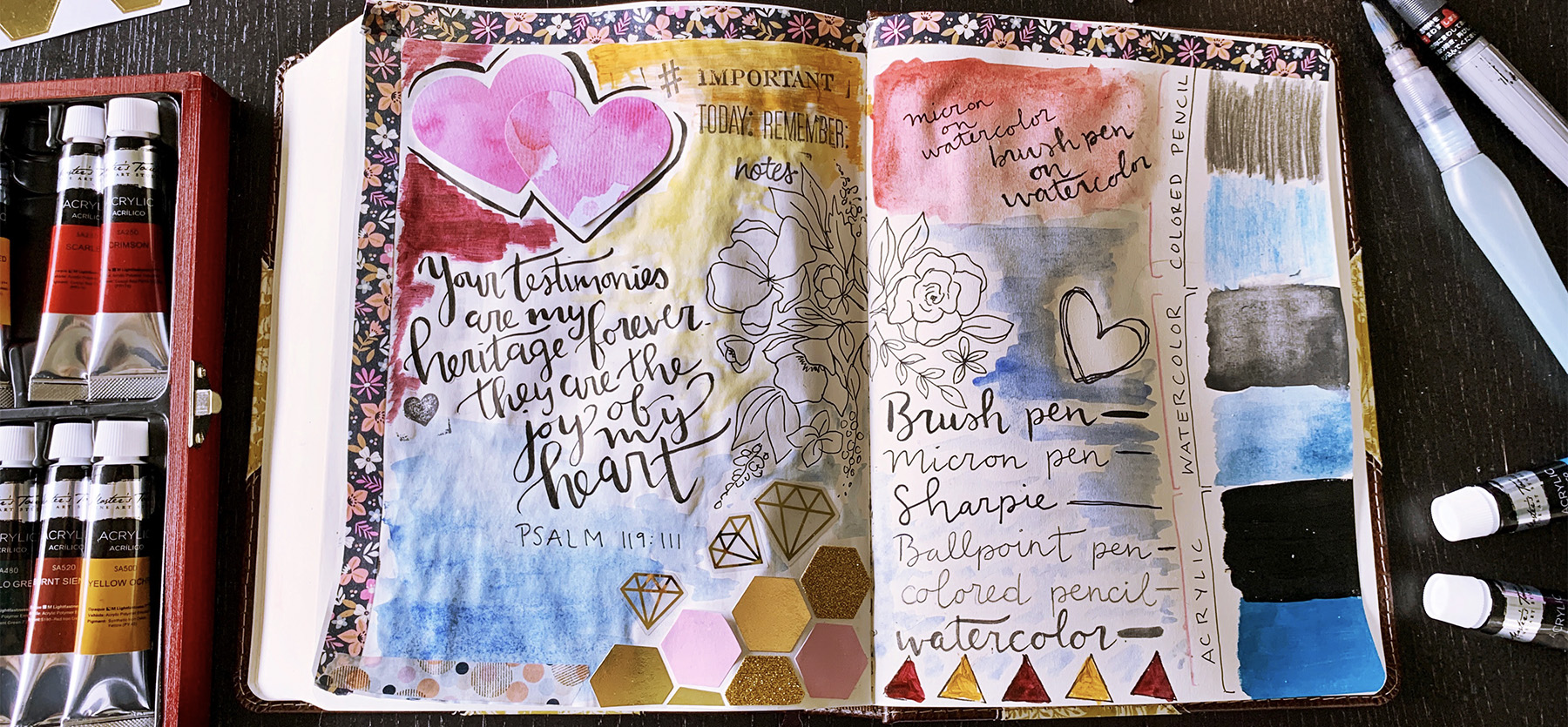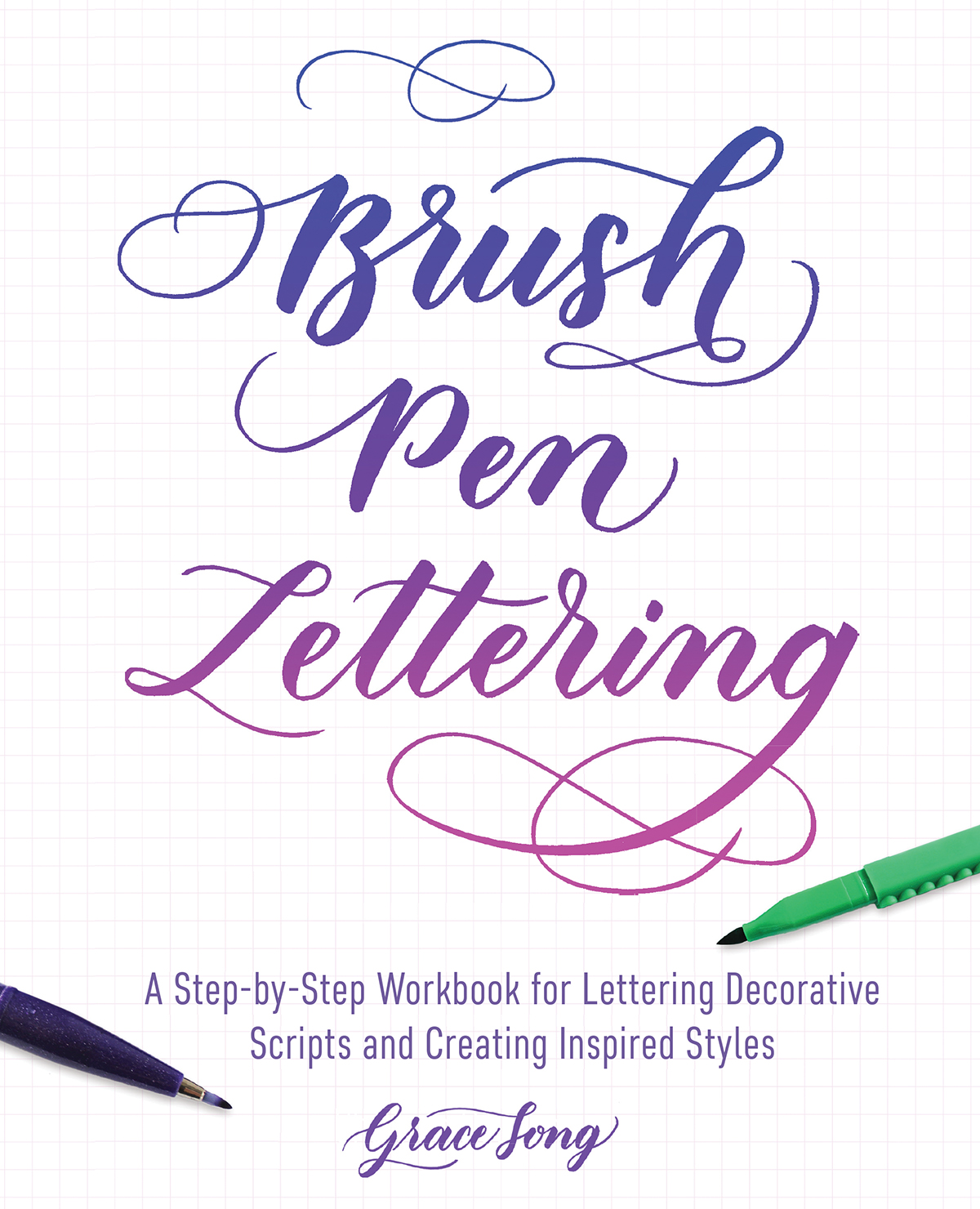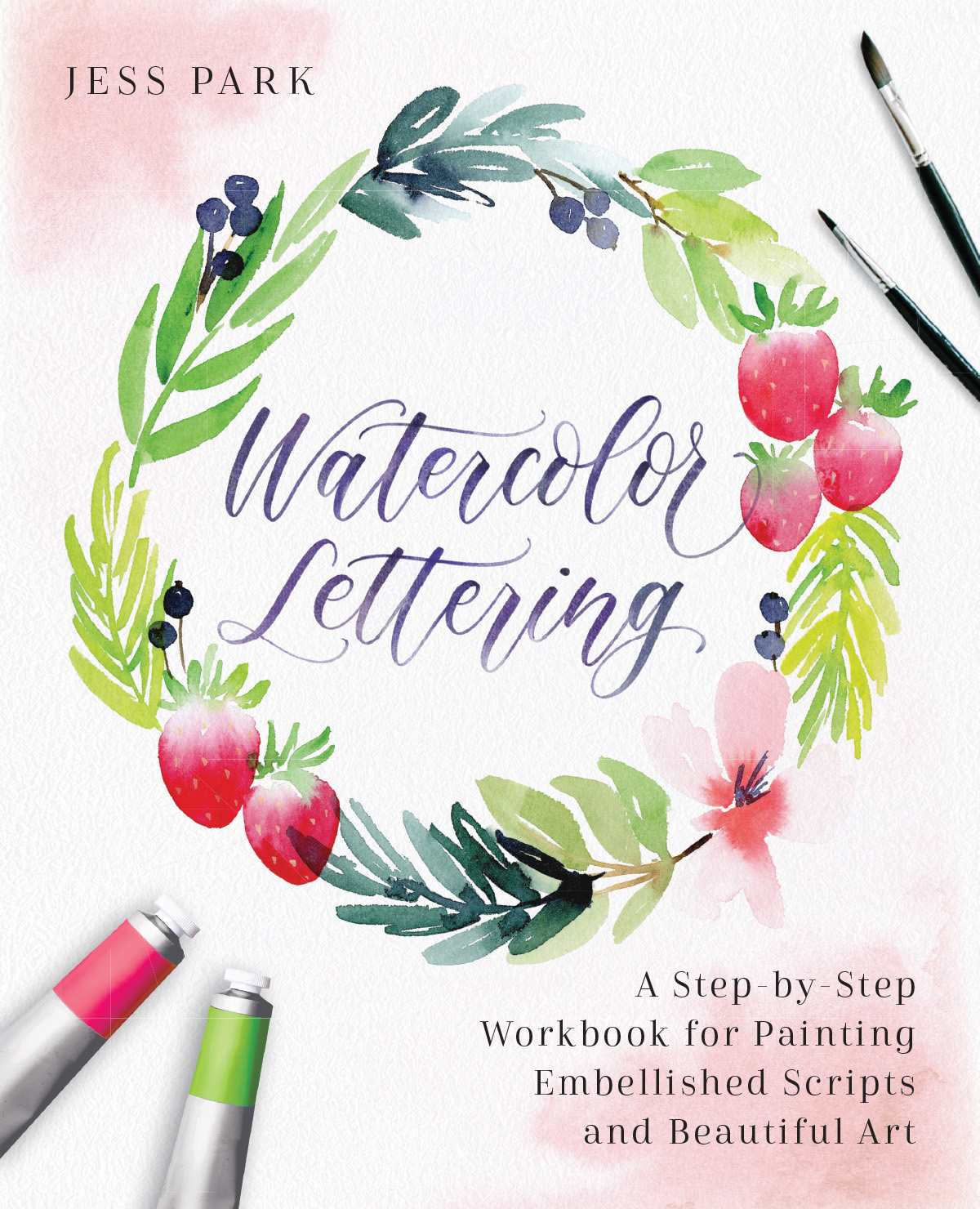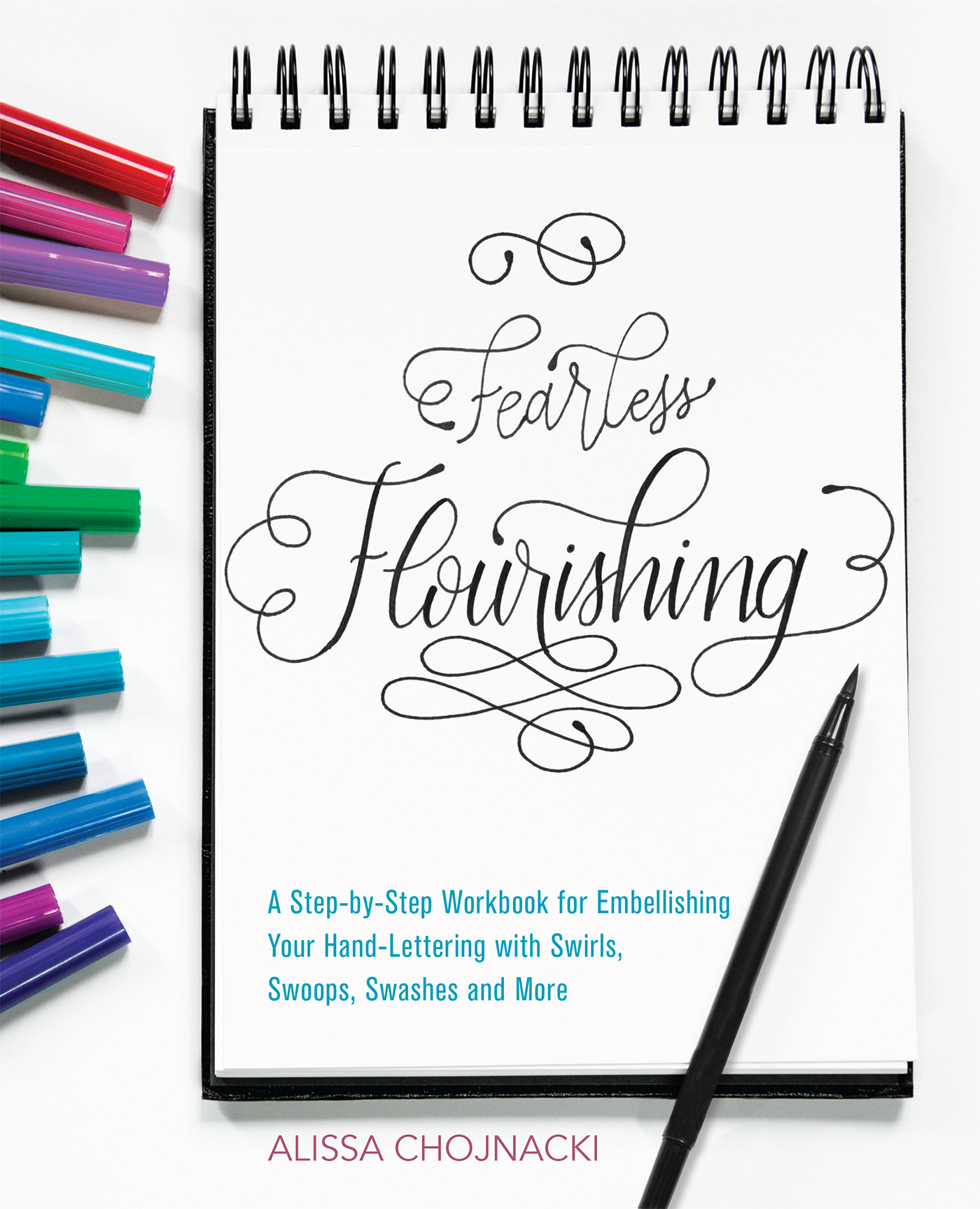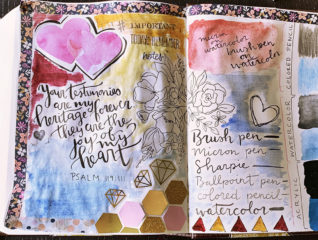
What Is Bible Journaling? How to Get Closer to the Lord through Art
- Book Sample
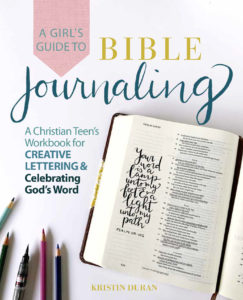
Love comes in all shapes and sizes. Whether it’s romantic love, friend love, or self-love, it’s important to show your love and appreciation for yourself and others. Another love that’s important to mention is love for the Lord.There are many ways that people like to express their faith. One unique, fun, and creative way to get closer to the Lord is through art. Kristin Duran shows just how to do that through bible journaling in her workbook A Girl’s Guide to Bible Journaling.
In the book, readers are given strategies, techniques, and step-by-step instructions on how to create beautiful art next to sacred text. Whether you’re a beginner or a budding artist, this book shows you how to combine your faith and art to create your own unique style of journaling. Read an excerpt below to get started on your journey.
For more projects, exercises, tips, and more, check out A Girl’s Guide to Bible Journaling.
What Is Bible Journaling?
I have to admit, when I first heard about Bible journaling, I was pretty skeptical. Sure, the practice of writing and illustrating in a journaling Bible (a Bible with extra blank space included in wide margins) made for pretty pictures to look at as I scrolled through Instagram, but I felt nervous about assuming that I could draw inside the Word of God. Was it disrespectful to paint the actual Bible? Was it wrong to write paragraphs of my own thoughts next to sacred text? Although I had always underlined important passages, this was taking the interaction to a whole new level.
And also, let’s be real: what if I messed up? It’s one thing to smudge a painting on a piece of sketch paper that I can throw away. It’s another thing to smudge a painting in the Holy Word of the Most High God, and it’s not like I can just rip out Psalm 23 and pretend nothing happened. But as I began to investigate this new, trendy art form, I learned something that changed it all for me: Bible journaling isn’t a new art form at all. It’s been around for thousands of years, and you and I have the beautiful opportunity to join its rich heritage.
Bible Journaling Throughout History
Before the printing press was invented by Johannes Gutenberg in the fifteenth century, the Bible, like all books, had to be copied by hand. This was an incredibly tedious process, and it made Bibles so rare and expensive that the only people who could afford one were members of the nobility. In addition, most people were illiterate during the Middle Ages (including the nobility), and the Bible was usually written in Latin, so even those who had access to a Bible often couldn’t read it—a stark contrast to our ability to linger with the Bible and our journals in the morning. Illustrations therefore became a crucial element, often painted directly next to the text, serving as aids for explaining Bible stories. You can still see examples in museums of beautifully illuminated Bibles, such as the Book of Kells and the Lindisfarne Gospels, their gold-leafed pages holding paintings of scenes such as the birth of Jesus and portraits of the disciples.
After the Gutenberg Press was invented, printed Bibles became more accessible and more widely translated into common languages. At this time, writing in the Bible took on a new, important role: preserving family history. Without online databases or organized government records, families used heirloom Bibles to chart meaningful information, such as birthdays, deaths, and weddings, alongside family tree information and treasured photos. These precious Bibles were passed down through the family, becoming a way for the new recipient to grab hold of the history before them, add in their own story on blank pages, and pass it on to the generation that followed.
Today, you and I have a similar opportunity. We have the chance to join a family of believers who realized that writing down our stories and illustrating verses next to the treasured words of God can deepen our understanding of Scripture. I know that my paintbrush feels a little more purposeful when I grasp that I am tapping into a practice that has been meaningful to Christians for over a thousand years! But we are not only connecting to generations before us; we have the opportunity to contribute our time, love of the Bible, prayers, findings, and meditations to those who might pick up our Bibles after us. At some point, we might share the artwork in our journaling Bibles with trusted friends. We might someday walk in on our daughters learning from our Bible study. We might someday find our granddaughters reading our prayers. There’s a sense of belonging and a depth of tradition we can celebrate as we realize that we’re part of something bigger than ourselves.
Tools to Get You Started
Pens and Pencils
Micron Pens
Micron pens (the generic versions are called technical drawing pens) are by far my favorite Bible-journaling tool. They are intended for precise, consistent lines, and their signature Pigma ink is specifically designed to not bleed on even the thinnest of pages, making them ideal for this craft. Additionally, the ink doesn’t run or feather if it comes in contact with liquid, which is perfect if you’d like to combine writing with watercolor. Micron pens come in seven tip sizes (003 to 08), so you can choose your level of line thickness. My go-to size is 03, but I use a variety of sizes depending on how delicate or bold I want my writing and illustration to look.
Paints
Watercolors
I generally use a combination of tubes (thick liquid paint you squeeze out onto an artist’s palette) and cakes (which are dry and come in a pan with other colors). Although I’m not a stickler for any specific brand, I’ve recently discovered Savannah Sohne’s Smart Watercolor kit, which has 42 colors, a water brush, a sponge, and a mixing palette, all in a portable pan. I love having a set of watercolors that can easily be stored in my backpack or purse, letting me practice my art whenever inspiration strikes.
Acrylics
Prior to Bible journaling, I had never touched acrylic paints. But I’ve grown to love the striking, solid colors that glide smoothly over the page. Acrylics don’t require water (apart from cleaning the brush in between colors), which makes them a bit easier to work with. They’re wonderful for painting flat, opaque areas of color as well as layering solid colors on top of each other, and they can also add nice texture to your page.
Brushes
Although there are a wide array of brush textures, shapes, and sizes, I generally stick to a small number of brushes and use them no matter what kind of picture I’m painting. The main reason is that my familiarity with a brush seems to matter more than the specific qualities of the brush. If I’m used to the way a brush feels and moves in my hand, I have better control over my picture, even if the brush is from a cheaper or less respected brand. I recommend that you choose a few brushes to experiment with, and then practice with them over and over until they feel like an old friend.
This book primarily covers watercolor painting, so my recommendations are focused on watercolor brushes (and I even use my watercolor brushes to paint the various acrylic pictures found in later chapters!). However, it’s important to mention that acrylic brushes have different properties than watercolor brushes, such as firmer bristles, which absorb less water.
Water Brush
My favorite brush to use for watercolors is Pentel’s Aquash Water Brush. Similar to the brush pen, it holds liquid (in this case, water) inside its barrel. You can buy them individually or in a set of three (with small, medium, and large tips), which is handy for varying the size of your illustrations or lettering.
Round Brush
This is the most common shape of paintbrush and is probably the one you used the most with your watercolor paints. It has a pointed tip for detail but then thickens toward the base, which is helpful for broader lines and curves. Round brushes are my go-to shape because I like the versatility of using one brush for multiple strokes rather than needing to change out brushes mid-painting. They come in many sizes, but for Bible journaling, I stick to medium to small brushes because I’m painting a small space.
Flat Brush
This brush looks just like it sounds. The bristles are arranged in a thin, wide square and are great for painting large surfaces that don’t require any detail (like single-color acrylic backgrounds).
Foam Brush
The only time I use a foam brush in Bible journaling is with gesso (see below). These are usually made up of a wooden handle with a piece of square foam attached at the top and are great for spreading thick liquid smoothly across a surface. Foam brushes are often inexpensive and disposable, so there’s no need to clean or store them in a specific way.
Clear Gesso
When I finally decided to try Bible journaling, I set out to find an invisible product that would coat the delicate page of my Bible, providing a buffer between the paper and my paint, pen, and ink so that my art/writing wouldn’t completely bleed through the page. I was thrilled to discover that such a product actually exists! Gesso is traditionally used to prime canvases for acrylic or oil paint so that it doesn’t soak into the fibers of the canvas. In addition to sealing the canvas, gesso provides a toothy texture for the paint to grab onto. Similarly, priming your Bible page with gesso will prevent your paint from absorbing into the paper.
You can apply gesso with a black foam brush. I’ve only ever experimented with one layer of gesso, but if you’re extra concerned that your painting will bleed through a page, you can add additional layers after the first has dried. Be sure that your layers are thin (not goopy!) and be careful to let them completely dry (around ten to twenty minutes) before closing your Bible, as it can also act as a glue between pages. After it’s dried, the page might try to curl up, but the weight of the rest of your Bible will help it flatten out once the Bible is closed.
Extras
Mat for Bleed-through Products
Whenever I’m using a liquid medium in my Bible (like watercolors or my brush pen), I make sure to place a mat underneath the page in case the liquid bleeds through. My mat is simply a piece of heavy cardstock, but anything thin, smooth, and sturdy will work.
Washi Tape
Washi tape is colorful tape that tears easily, making it popular for all sorts of crafts, and I’ve found it extremely helpful for taping things inside my Bible. This gentle tape doesn’t leave any sticky residue behind, and it won’t tear the page if you decide to remove it (although I still recommend using a gentle hand when lifting it off). The times I’ve most frequently used washi tape are when I’ve accidentally bled through one side of the page but still want to write something on the other side. I simply write or illustrate my thoughts on a piece of thin cardstock and then tape the cardstock in the normal margin space. Additionally, many people use washi tape as a pretty border or line to separate thoughts in their Bibles.
Sticky Notes
Because we are lifelong learners of the Bible, the same verse can speak to us over and over in different seasons. Sometimes I’ve used up the entire margin of a page with thoughts, notes, and prayers, only to find out that I have something new to write or paint and there’s no more space. In this situation, I love sticky notes. I simply write out my thoughts on a sticky note and place it in the margins. Because sticky notes work like a flap, I can easily lift them up and see my previous writing.
Cutouts, Stickers, and Stamps
Attention, scrapbookers! Bible journaling is a great lane in which your paper-craft dreams can run. There are endless supplies of cutouts, stickers, stamps, and other accessory tools at any craft store. My general rule is to only purchase products that I can see myself using multiple times in my Bible. I don’t want to purchase a stamp of a pretty mountain and then feel like I can only use it once! My stamp collection includes alphabet letters (for an example, see page 114), dates, banners, and other multiple-use words. Caution: stamps are notorious for bleeding through Bible paper. I definitely recommend layering gesso underneath.
Ruler
I use a ruler almost every time I work in my journaling Bible. Straight lines do wonders for making a page look put together and clean. If I’m drawing out a verse to memorize, I first use my ruler to pencil out baselines so that I can write my words neatly on the page. If I’m diving deep into Bible study, I use my ruler to draw simple squares to organize information. Rulers also help for general Bible-journaling projects.
The Bible
While this one seems super obvious, the Bible is the greatest Bible-journaling tool we have. It holds a profoundly important place in history past and eternity future, and learning about it can fuel confidence in our faith that truly changes the way we believe, think, and act.
What Makes the Bible Different from Every Other Book?
THE BIBLE’S COMPOSITION IS ENTIRELY UNIQUE. It was written by more than forty authors in three different languages on three different continents over a period of around 1,500 years. The writers were from different cultures, generations, and socioeconomic classes—kings, fishermen, shepherds, a doctor, a musician, a tentmaker, and more. Can you imagine if a different book had this kind of wild variation? It wouldn’t make any sense. Yet despite this seemingly disjointed authorship, the Bible maintains continuity, integrity, and a unified declaration of the gospel. The Old Testament prophesies Christ, and the New Testament proclaims Him.
THE BIBLE IS MIRACULOUSLY DURABLE. It has been burned, prohibited, attacked, and mocked, and entire governments have fought to destroy it. Yet it remains the best-selling book of all time, translated into 698 languages, with billions of copies sold.
THE BIBLE IS HISTORICALLY ACCURATE. You can personally see biblical artifacts, walk the exact ground where Jesus walked, study the actual places, peoples, and events in history books, and learn about the 24,000 manuscripts that confirm the New Testament. And let’s not forget the 300 fulfilled prophecies about Christ! Furthermore, the Bible is seen as a holy book by every other major world religion, and it declares itself to be inspired text.
THE BIBLE IS STILL APPLICABLE. Despite being an ancient book, it continues to have a practical impact on people’s lives around the world. As we let the words of the Bible take root inside us, it changes our character from the inside out, teaching us about forgiveness, compassion, servant-heartedness, relationships, money, time, and more. This is only one of the reasons that millions of people read the Bible year after year, making it the subject of more songs, podcasts, sermons, books, and lectures than any other topic. Sister, start your Bible-journaling with confidence, awe, and celebration that what you’re reading is the true, supernatural Word of God. Let it grip your life, change your heart, and stir your mind.
Types of Journaling Bibles
You can find a journaling Bible in nearly every translation, and most have variations in print size and columns of Scripture. The feature that sets journaling Bibles apart from other Bibles is the extra space given for writing and illustration, and so the amount of space varies between different Bibles, normally letting the buyer choose between one or two inches of journaling space in the margins. However, the Crossway ESV Scripture Journals have each book of the Bible individually bound and an entire blank page opposite every page of Scripture. My personal journaling Bible is Crossway’s ESV Single Column Journaling Bible in the Antique Floral Design.
Your Workspace
While many art forms require a designated workspace, you don’t need any specific setup to get started with Bible journaling. In fact, you’ll most likely use your Bible journal in a few different places, including church, coffee shops, and your home. Some projects require a tiny bit of extra preparation (such as having a cup of water for watercolor paint), but these are still easy to take from place to place, and all of the Bible-journaling tools mentioned above are small enough to fit into a backpack. The most important thing is that no matter where you settle in for some Bible-journaling time, your space feels comfortable and focused. For me, this means a clean, organized area where I’m free from distractions. In order to get my mind into an artistic zone, I also love to pour myself some hot tea, play some worship music, and turn on some soft lighting instead of relying on bright overhead lights.
Bible Journaling Strategies
Why Should We Memorize the Bible?
Memorizing for the Long Run
I didn’t know it when I was a ten-year-old girl, but memorizing Psalm 91 was like a spiritual investment. Normally when someone is making a financial investment, they put money into an account that they don’t benefit from immediately. The money stays there for a while and grows, especially if more is added to it. It provides the owner with confidence, security through life’s ups and downs, and is extremely helpful if an emergency suddenly arises.
Memorizing Psalm 91 is an investment I made as a little girl that will pay off for the rest of my life. And it’s defining moments like the coronavirus pandemic that have made Scripture memory a consistent priority for me throughout the last twenty years: I memorize for my current self, but I also memorize as an investment for my future self. I have no idea what beautiful or painful circumstances I will someday face, but in the middle of a crisis, I don’t want to find that my internal spiritual account is empty, desperate to be filled with emergency deposits from the opinions of other people, news headlines, or an endless scroll of digital distractions. Instead, I want my heart, soul, and mind to pull from an account rich in the Word of God. I want to be filled to overflowing with hope, wisdom, strength, and truth for the journey.
Memorizing to Form Our Lives
Apart from spiritual investments, why do we memorize the Bible? It’s not so that we can show off impressive knowledge, win a trophy in Bible trivia, or debate people who think differently than us. Memorizing the Bible is not as much about gaining information as it is about the formation of our lives. We write verses on our hearts and minds in order to form our understanding of God, form our character, and form our emotions, responses, attitudes, and loves. As we etch passages of Scripture into the grooves of our minds, the sacred words take root inside of us, changing us from the inside out. They turn into patience with our siblings, groceries for the homeless, hatred of racism, and friendship extended to the girl who sits alone. The memorized word shows up in world-changing justice, such as the fight against human trafficking, and in heart-changing service, such as doing the dishes without being asked. Deuteronomy 30:14 says that the word is “in our mouths and our hearts so that we can do it.” The Bible is not just a book to be read; it is a book to be lived.
Memorizing for Nonstop Access to the Bible
A third reason to memorize the Bible is that it gives us 24/7 access to the very words of God. After I got my first iPhone, I stopped reading and memorizing the Bible as intentionally because I felt like it wasn’t as necessary. It seemed like I didn’t need to put in the difficult work of memorization if I could just look up a verse at any moment of my day. I realized pretty quickly, however, that this wasn’t the case. In the middle of an emotional conversation with a friend, it didn’t feel good to push the pause button as she poured out her heart so that I could type the right phrase into Google to look for a verse. No, I wanted the Word of God inside me, able to be ushered out at that very moment to provide hope and counsel and comfort for her. Similarly, I’ve been unbelievably grateful for memorized verses in these first two years of motherhood. Crinkly Bible pages are an incredible temptation for a baby, and it’s hard to sit down for a solid amount of time to read without him needing something. But the Bible is with me. I access it while I’m driving, while I’m laying my son down to sleep at night, and while we take walks around the neighborhood. I’m not dependent on convenient timing. At any moment of my day, I can meditate on Scripture because it’s already in my mind.
Bible Memorization Strategies
Now that we’ve talked about the why, let’s get to the how! I’ve found that the best way for me to memorize Scripture is to combine the three strategies listed below.
Repeatedly Say the Verses Out Loud
While researchers disagree on the exact number of times it takes to memorize something by saying it aloud, most of them say that it’s well over 20 times, and many say it needs to be read aloud between 50 and 100 times! At first these numbers felt daunting to me, but after putting this into practice, it’s become one of the best habits of my life. I could say the same passage a thousand times out loud and still find that the living and active Word of God is teaching me new truths about His character and our world.
Meditate on Meaning
Nowadays the word “meditation” is widely associated with practices like yoga and mindfulness, but the Bible talks about a different sort of meditation. Instead of focusing on our breath or emptying out our mind, Christian meditation involves actively filling our minds with Scripture.
After reading a passage aloud several times to begin memorizing it, I start truly meditating on the various words in the passage. For example, the first verse of Psalm 91 is “He who dwells in the shelter of the Most High will rest in the shadow of the Almighty.” In meditating on this verse, I asked myself a series of questions: What does it mean to dwell in God’s shelter? How can I practically apply this to my life? Am I currently dwelling under the covering of something else, like anxiety or fear? What would it mean to dwell under God’s covering instead?
Another key aspect of meditating on a verse is reading it in the context of the surrounding verses. Sometimes we hear a famous verse that seems inspirational, only to find out later that the actual meaning of that verse is completely different than we thought. As Christians who are basing our lives on the Word of God, it is crucial that we take time to learn what God is actually saying.
A small example of this is Psalm 46:5, which says, “God is within her; she will not fall.” This verse is written in beautiful calligraphy all over Pinterest, mass-produced on journal covers, and printed on the back of girls’ soccer team jerseys. However, if you read the rest of Psalm 46, you’ll find that the “her” in the verse is actually referring to the “city of God,” or the church as a whole. It’s important to know this, because the truth is that you and I will fall at various points throughout our lives. If we think this verse means we should expect to succeed at every turn, we might become angry with God when it doesn’t come true, thinking that He didn’t fulfill His promise to us. When we realize, however, that the collective church of God will always remain, it can produce a different type of worship inside of us.
Psalm 46:5 is still a great verse to memorize. God will always protect the great work of love and redemption He is doing through His church on earth. We can have confidence that even if we mess up, or our youth pastor or Sunday school teacher messes up, God’s church stands strong. God is within her; she will not fall.
Draw It Out
You’ve probably heard it a thousand times: if you want to remember something, write it down! And it’s for a good reason: different parts of our brain process different types of information, and writing something down activates multiple regions at the same time. It takes significantly more time to draw out a word than to read it, say it, or type it, and so constructing each word means that you are coding it into your brain on a deeper level. For this very reason, I never mind drawing out dozens of “rough drafts” of Bible art before I get to the final version. I know that each time I mess up and start over, I’m giving myself another chance to truly digest the words I’m trying to memorize.
For this project, I chose to memorize Jeremiah 17:7–8. Its tree metaphor is such powerful imagery, and I knew that it would be fun to paint. To begin, I sketched out the tree and leaves with a mechanical pencil, being careful to not press too hard. Then, I placed a thin cardboard sheet underneath the page to ensure that nothing would bleed through onto other pages. I traced my pencil marks with a black Micron 05 pen (but used a thinner 01 pen for the trunk, since I knew I’d be painting words on top of it) and then gently erased the pencil marks underneath. For color, I used a small, round brush to paint the leaves with acrylic paint in three shades of green (Light Green, a mixture of Light Green and Phthalo Green, and a mixture of Light Green and Yellow Medium). The acrylic paint covered up quite a bit of my Micron pen marks, so I retraced them once my paint dried. Finally, I wrote out the verses with a black Micron 01 pen, tracing over some of the downstrokes with the faux calligraphy technique to make them stand out.
—
For more information on bible journaling, check out A Girl’s Guide to Bible Journaling.
